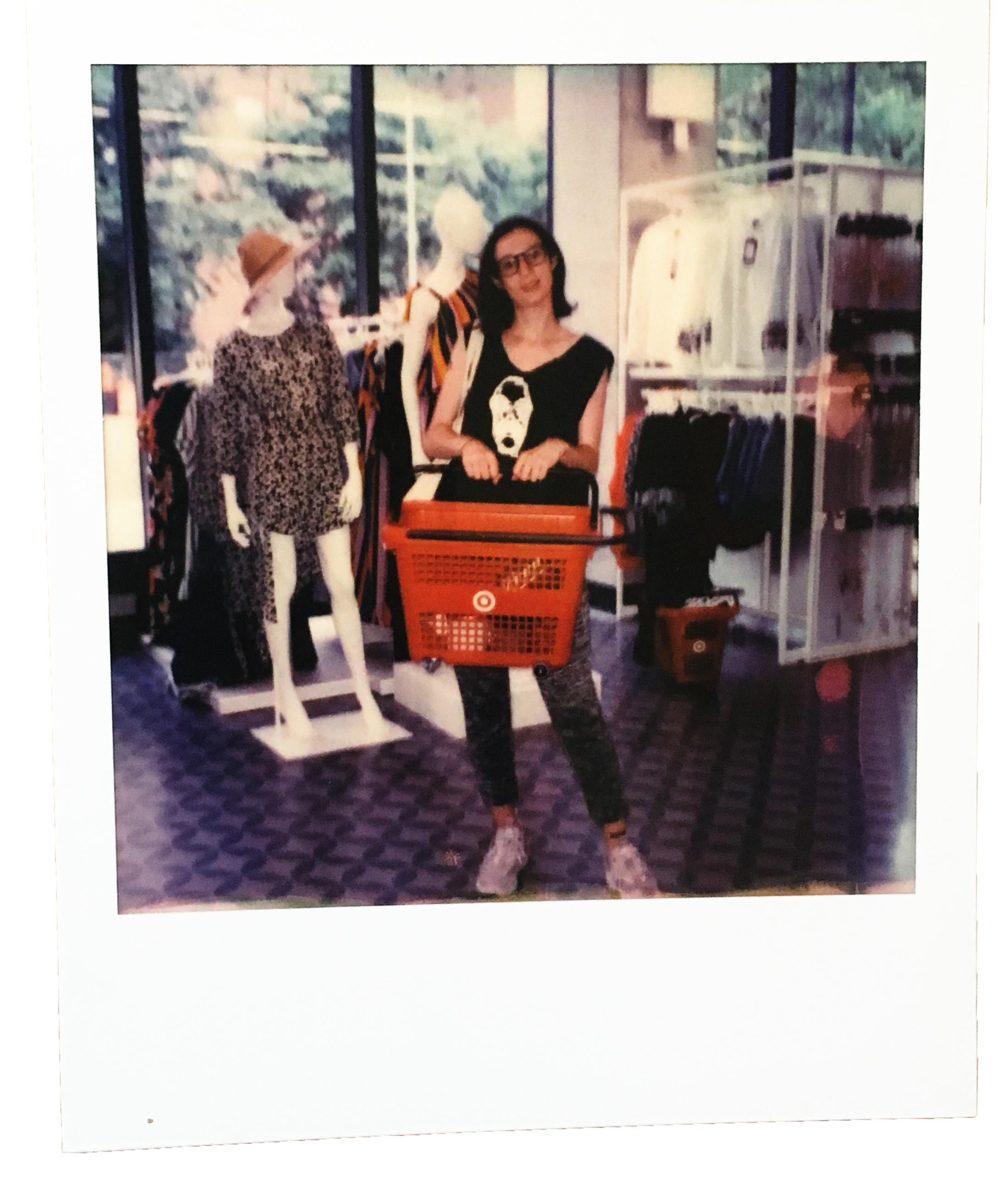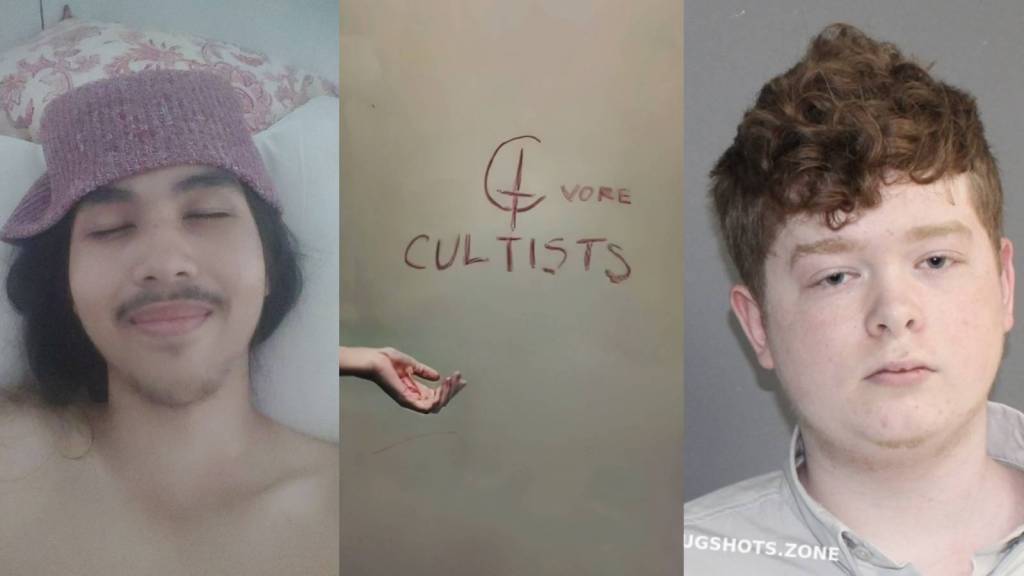To celebrate the grand opening of a new Target in Manhattan’s East Village last weekend, the superstore paid homage to CBGB, the iconic (and defunct) punk music venue. This consisted of the company erecting its very own branded replica of the storied place, named TRGT. Naturally, the gesture provoked outrage from those mourning the never-ending gentrification and concentration of wealth that consume New York (and plenty of other cities). “It was a terrible, just God-awful idea,” wrote my colleague Alex Robert Ross at Noisey. In an interview with Fox 5, the executive director of the East Village Community Coalition called the stunt “really pretty tasteless.” Jezebel writer Kelly Faircloth urged the retail giant to “fuck off!”
Target has since expressed regret for missing the mark with its corporate tribute—”we sincerely apologize if some event-goers felt it was not the best way to capture the spirit of the neighborhood,” the company wrote in a statement.
Videos by VICE
But having grown up less than two blocks from the new store, rather than letting the latest tasteless corporate branding stunt die, I decided the only way for me to mourn this bizarre state of affairs was to shop there—with my mom, Ruth. She’s lived in the East Village for almost 40 years, and used to frequent CBGB. I saw this as an easy opportunity to relive her glory days—and meditate on how the 21st Century American City became so hostile to the alternative culture that once thrived in places like CBGB.
As my mom and I entered the store Thursday, we were greeted by a mural, the words “East Village” painted onto the wall in the brand’s signature red and white. The head of a smiling dog, donning a cap and sunglasses, sat between the “G” and “E,” next to an image of the famed “Theatre of St. Marks” sign, and a piece of pizza floating in the abyss. “The East Village is no longer cool,” my mom wryly observed.

Wandering through the brightly-lit aisles of her new neighborhood megastore, my mom explained that she’d been “horrified” when she saw the faux CBGB over the weekend. “Did Target really think they were capturing the vibe of the East Village? I felt deflated at the commercialization of something so iconic,” she said. “It made me sad because when I moved here, there was a counterculture.”
My mother moved to New York from Sydney, Australia, in 1978, and settled in the East Village in 1980, on the block where Taxi Driver had been filmed a few years earlier. Her rent was $300 a month, she recalled. She was an artist and played in various no-wave bands, occasionally performing at CBGB herself.
And yet despite my mother’s biting criticism of her new local superstore, when we walked by the new Target last week—prior to the CBGB debacle—her eyes lit up. “The Target is finally open,” she said excitedly. “I have to check it out!” As punk as my mom may have once been, she can’t resist a good deal, and was eager to see what bargains the new store had to offer. She walked me to the L train and on her way back home, stopped inside and bought some nail files and hair clips.
“CBGB was making a statement against the values of the mainstream and people whose motivation was profit,” she explained as we examined the store’s selection of moisturizers. “Aveeno is on sale!” she suddenly exclaimed, before continuing to reminisce about the good old days of the East Village. “Some nights, CBGB was empty. Other times the crowd was overflowing on the street. It was dirty and hot, and the bathroom, which is now iconic, smelled so bad. Our band got booked there, big names got booked there.”

It’s safe to say the East Village ceased being a hotspot for young experimental artists long before the 14th Street Target opened. But there’s still a bit of romance to the way my mom describes living in the area in the 1980s. “Outcasts from all over the world would come to New York, and feel like they found a home,” she said. “When you ran into a friend on the street, you wouldn’t ask them, ‘How are you?’, you’d say, ‘What are you working on?’ because everyone was working on something creative.” She worked 20 hours a week to pay her rent, she said, spending the rest of her time making art and playing in bands.
“I was one of the first gentrifiers,” she conceded. “My [first East Village apartment] building was largely Hispanic families in rent-controlled apartments.” The idealized community of artists was, of course, displacing East Village residents who came before them.
I was born in 1993, so I never got to experience the East Village in its prime. Throughout my childhood, I witnessed the neighborhood lose what was left of its character, becoming overrun with Starbucks, Duane Reades, and various prohibitively expensive boutique shops. The East Village has undergone so much commercial development, when I pass by some new hip bar or store, I usually can’t remember what used to be there. On 14th Street between Avenues A and B, where the Target and luxury condos atop it currently live, however, I know there was once a pizza place (aptly named Pete’s-A-Place), Crossbay Video Rental, and a bodega. Further down the block, there was a mega discount store called Bargain Bazaar, which always smelled like mothballs, a Rite Aid, and a casual Cuban joint that sold cheap fried chicken.
When I was in high school, a fire decimated half the block, and ever since, the area has been in limbo, continuously under construction. So my mother’s initial excitement at the opening of the Target was, in a way, justified—at least there was something there now.
After all, at this point, the East Village is arguably in a state of post-gentrification. It’s been so long since the neighborhood was an affordable beacon of alternative culture that the Target isn’t some omen of the devolution of the neighborhood, but rather a natural feature of its late-capitalist landscape.
During my childhood, the middle-class housing complex where we lived was transformed into luxury apartments, a trend throughout the East Village, where landlords kicked out as many rent-controlled tenants as possible. “When landlords got greedy and upped rents, we signed petitions trying to stop them,” my mom said. “But none of that has much of an effect as largely they weren’t doing anything illegal.” The city didn’t do much to protect the tenants, and the rents kept on rising.
An alien corporate entity like Target co-opting a countercultural emblem like CBGB is met with such vitriol precisely because it reminds us of all that. CBGB, which helped launch the careers of iconoclasts like the Ramones and the Talking Heads, now only exists as a brand for bigger brands to exploit for profit—and as a stall at Newark Airport. Its spirit has been lost, and we’re left with a superstore that, if not for its East Village mural, could be in Anytown, USA.
More broadly, it sometimes feels like bona fide counterculture is almost impossible to create in this hyper-digital era of globalization, deep-fried memes and exorbitant rent. Any authentic bit of creative expression is almost instantly absorbed into mass culture, perhaps in the form of a brand’s edgy Twitter account or Urban Outfitters’ latest collection.
As my mother and I geared up to leave Target, I couldn’t help but notice their affordable selection of scented candles. And a $10 flour sifter? I’d been meaning to buy one of those. I am as dubious of capitalism as any good millennial, but nevertheless I ended up spending $50 on a variety of knick-knacks I swore I needed.
If you can’t beat ‘em, join ‘em.

Sign up for our newsletter to get the best of VICE delivered to your inbox daily.
More
From VICE
-

Image Credit: Natalli Amato -

Collage by Vice -


